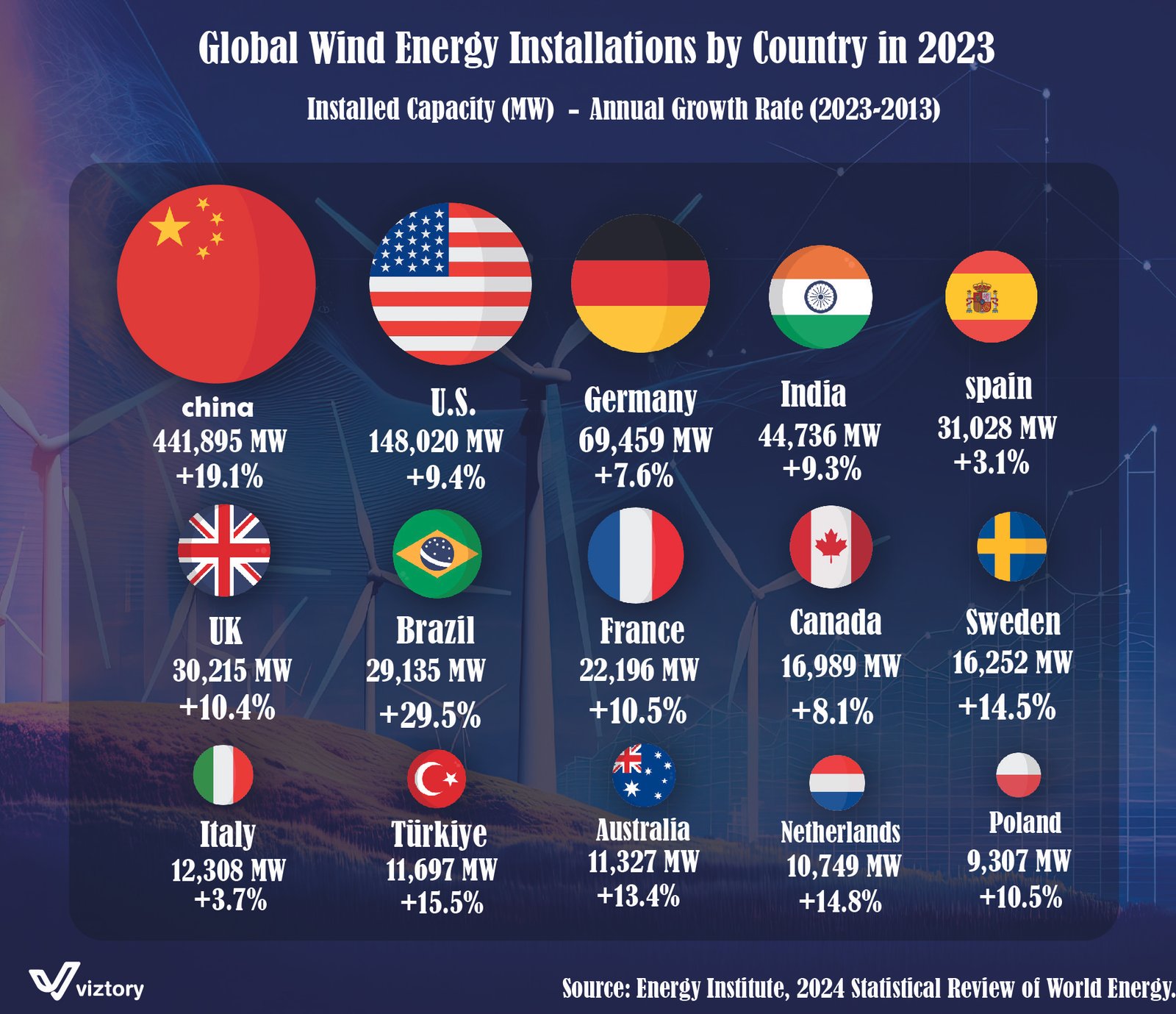Global Wind Energy in 2023
-
Sep, Tue, 2024
Global Wind Energy in 2023: How Investments in Renewable Energy Drive Economic Growth
Introduction:
The image showcases the distribution of installed wind energy capacity globally in 2023, highlighting growth over the past decade. Wind energy is one of the leading renewable energy sources, requiring significant investments and offering vast economic opportunities. By integrating this information with financial aspects, we can explore how investments in this industry yield economic returns and open up new growth opportunities.
Significant Investments and Increased Production:
China tops the list with an installed capacity of 441,895 MW, representing an annual growth rate of 19.1% since 2013. This substantial investment in wind energy not only strengthens China’s electricity grid but also provides widespread job opportunities and reduces the country’s dependence on imported fossil fuels, saving billions annually.
Following China is the United States, with an installed capacity of 148,020 MW and a growth rate of 9.4%. Major corporations have poured massive investments into wind energy projects, linked to promising profitability. Government policies offering tax incentives have also attracted more investors to this sector.
Profiting from Clean Energy:
Wind energy is a low-cost energy source once the initial setup is complete, reducing operating costs compared to conventional energy sources. Germany, with an installed capacity of 69,459 MW and an annual growth rate of 7.6%, serves as a model for investing in renewable energy as a way to cut reliance on traditional energy sources and save money in the long term.
Boosting Local Economies through Wind Energy:
Emerging countries like Brazil, which has seen an annual growth of 29.5%, benefit significantly from wind energy investments. These investments stimulate the local economy by creating new job opportunities in construction, maintenance, and technological innovation, boosting the national GDP.
Similarly, Turkey, with an installed capacity of 11,697 MW and a growth rate of 15.5%, is reaping the rewards of wind energy investments, which help reduce fuel import costs and enhance economic independence.
The Future of Wind Energy Investment:
With rapid growth in wind energy capacity, countries are becoming self-sufficient in electricity production, saving significant amounts previously spent on importing fossil fuels. For instance, Australia and the Netherlands, which have experienced significant wind energy growth rates of 13.4% and 14.8%, respectively, are poised to benefit from these economic shifts toward sustainability.
Conclusion:
Investing in wind energy is not only an environmental choice but also a financially savvy one. By reducing operating costs, enhancing economic independence, and creating jobs, these investments can deliver substantial long-term financial returns. Countries investing in this sector today, such as China, Brazil, and Turkey, are not only profiting from sustainable energy sources but also laying strong foundations for future economic growth.

